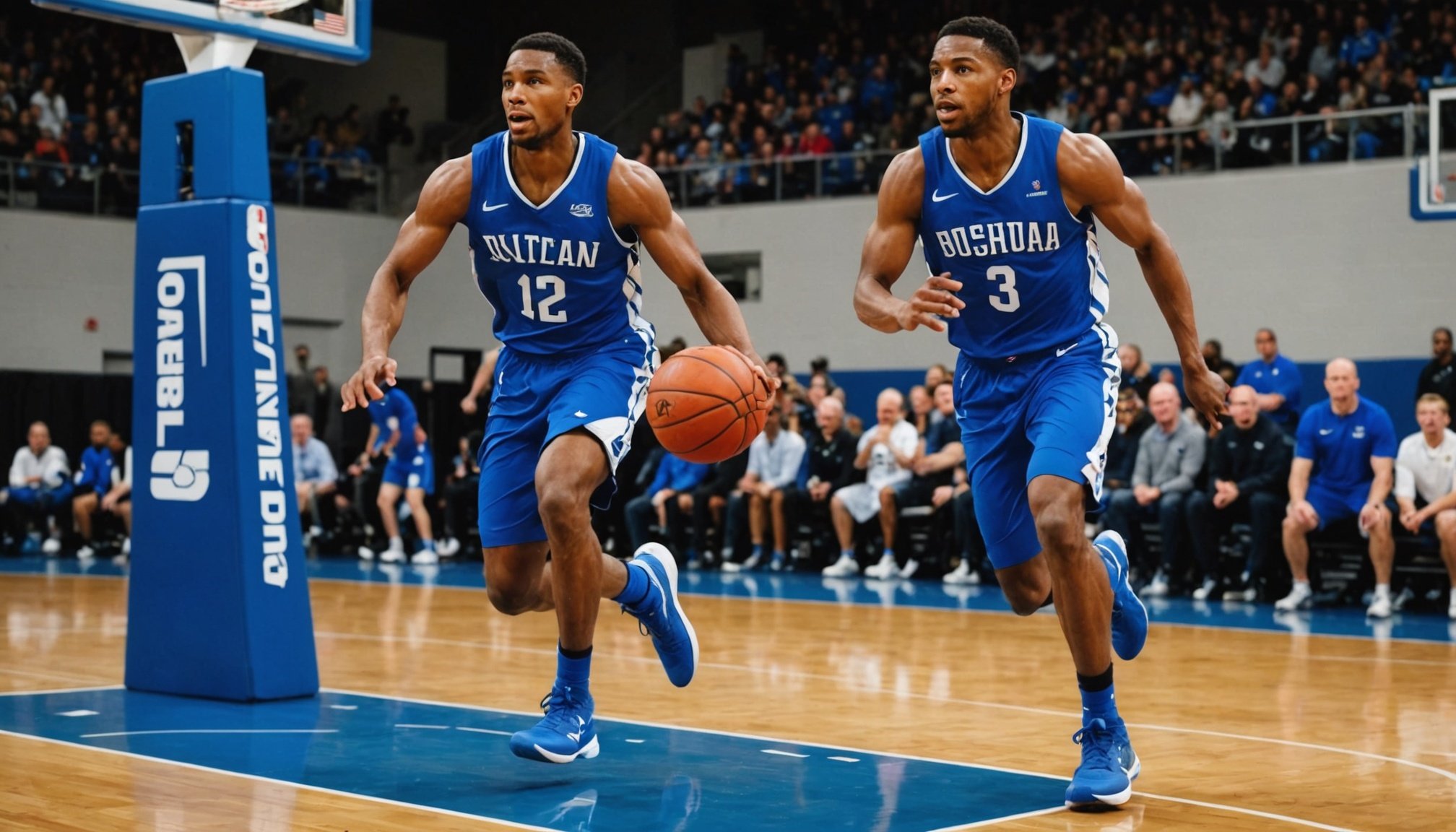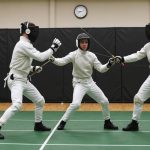Unleash Your Potential: The UK Basketball Player’s Ultimate Guide to Mastering Plyometric Power
Understanding Plyometric Power: The Foundation of Basketball Excellence
Plyometric power is the cornerstone of any successful basketball player’s arsenal. It’s the ability to generate force quickly, which translates into explosive jumps, rapid changes of direction, and the speed to outmaneuver opponents. To master plyometric power, you need to understand its components and how to integrate it into your training program effectively.
The Science Behind Plyometrics
Plyometric exercises, such as jumps and box jumps, involve the stretch-shortening cycle (SSC), a process where your muscle undergoes an eccentric phase (lengthening) followed by a concentric phase (shortening). This cycle is crucial for generating power. For example, when you perform a drop jump, your muscles first absorb the impact (eccentric phase), and then rapidly contract to propel you upward (concentric phase)[1].
Key Components of Plyometric Training
To elevate your plyometric power, you need to focus on several key components:
- Reactive Strength: This is the ability to quickly generate force after a brief period of eccentric loading. Exercises like depth jumps and box jumps are excellent for improving reactive strength.
- Ground Contact Time: Reducing the time your feet spend on the ground during jumps can significantly enhance your power output. This is because shorter ground contact times allow for more rapid force generation.
- Speed and Muscle Activation: Plyometric training should be performed at high speeds to mimic the demands of basketball. This involves activating your fast-twitch muscle fibers, which are responsible for explosive movements.
Designing an Effective Plyometric Training Program
Creating a well-structured plyometric training program is essential for basketball players. Here’s how you can do it:
Also to discover : Mastering the paint: top rebounding drills for uk basketball centers to dominate the boards
Needs Analysis and Program Design
Before designing your program, conduct a thorough needs analysis of the sport’s demands. Basketball requires a combination of strength, power, speed, and agility. Here are some steps to follow:
- Identify Common Injury Sites: Basketball players are prone to injuries such as knee sprains and shin splints. Incorporate exercises that strengthen these areas, such as single-leg squats and calf raises.
- Incorporate Movement Variability: Include a variety of movement patterns to vary the point of force application and coordination demands. This can help reduce the risk of overuse injuries[1].
Sample Training Program
Here’s a sample 5-week plyometric training program that you can integrate into your strength and conditioning routine:
| Week | Exercise | Sets | Reps | Rest Between Sets |
|---|---|---|---|---|
| 1 | Box Jumps | 3 | 8-10 | 60-90 seconds |
| 1 | Depth Jumps | 3 | 8-10 | 60-90 seconds |
| 1 | Lateral Bounds | 3 | 8-10 | 60-90 seconds |
| 2 | Medicine Ball Throws | 3 | 8-10 | 60-90 seconds |
| 2 | Single-Leg Hops | 3 | 8-10 | 60-90 seconds |
| 3 | Plyometric Lunges | 3 | 8-10 | 60-90 seconds |
| 3 | Tuck Jumps | 3 | 8-10 | 60-90 seconds |
| 4 | Box Jumps with Step-Up | 3 | 8-10 | 60-90 seconds |
| 4 | Lateral Box Jumps | 3 | 8-10 | 60-90 seconds |
| 5 | Complex Training | 3 | 8-10 | 60-90 seconds |
Progressive Overload
To continue making gains in plyometric power, it’s crucial to progressively overload your muscles. This can be achieved by:
- Increasing the Height of Jumps: Gradually increase the height of the boxes or platforms you jump onto.
- Adding Resistance: Use resistance bands or weighted vests to increase the load.
- Reducing Rest Time: Decrease the rest time between sets to increase the intensity of the workout.
Practical Strategies for Integrating Plyometric Training
Integrating plyometric training into your existing sports-specific training can be challenging, but here are some practical strategies to help you do it effectively:
Sequencing Your Training
The sequencing of your strength and conditioning provision and your sport-specific training is critical. For example, if you have a high-intensity basketball practice in the evening, it might be best to do your plyometric training in the morning or on a different day to avoid excessive high-impact activities[1].
Using Minimal Equipment
You don’t need a fully equipped gym to perform effective plyometric training. Here are some exercises that can be done with minimal equipment:
- Body Weight Jumps: Squat jumps, tuck jumps, and single-leg hops can be done anywhere.
- Medicine Ball Training: Medicine balls are versatile and can be used for throws, slams, and rotational exercises.
- Box Jumps: Use any sturdy box or bench to perform box jumps.
Managing Injury Risk and Recovery
Injury prevention and recovery are as important as the training itself. Here’s how you can manage these aspects:
Identifying Overuse Injuries
Overuse injuries are common in basketball players, especially those specializing early. Here are some signs and symptoms to watch out for:
- Gradual Onset of Pain: If you experience pain that gradually increases over time, it could be a sign of an overuse injury.
- Common Injury Sites: Pay special attention to areas prone to overuse injuries such as the knees, shins, and lower back.
Rehabilitation and Management Strategies
If you do suffer an injury, here are some strategies to help you recover and manage the injury:
- Seek Medical Advice: Consult with a medical professional to get a proper diagnosis and treatment plan.
- Incorporate Anti-Rotation Exercises: For sports like golf, incorporating anti-rotation exercises can help reduce the risk of lumbar-spine injuries[1].
- Modify Your Training: Adjust your training program to avoid exacerbating the injury. For example, reduce the volume and intensity of high-impact plyometrics during a competition phase.
Real-Life Examples and Anecdotes
Let’s look at some real-life examples of how plyometric training has benefited basketball players:
The Case of Elite Pre-Pubertal Gymnasts
A study on elite pre-pubertal gymnasts showed that combined strength and plyometric training significantly increased their drop jump performance. The authors recommended reducing the time spent on habitual repetitive routines to allow time for more targeted strength and power training stimuli[1].
The Parkour Tic-Tac Action
A study comparing the parkour tic-tac action with the drop jump in highly-trained youth basketball players found that both exercises improved physical performance, but the parkour tic-tac action was more effective in enhancing speed and agility[2]. and Actionable Advice
Mastering plyometric power is a journey that requires dedication, the right training strategies, and a focus on injury prevention. Here are some final tips to help you on your way:
Elevate Your Training
- Be Consistent: Consistency is key when it comes to plyometric training. Aim to do plyometric exercises at least 2-3 times a week.
- Listen to Your Body: Pay attention to your body and adjust your training program accordingly. If you feel fatigued or experience pain, it may be time to reduce the intensity or volume of your training.
- Seek Professional Guidance: Work with a qualified strength and conditioning coach who can tailor a program to your specific needs and goals.
By following these guidelines and integrating plyometric training into your routine, you can significantly enhance your performance on the basketball court and unleash your full potential. Remember, the key is to be patient, persistent, and always focused on progressive overload and injury prevention. With the right approach, you can achieve the explosive power and speed that sets top basketball players apart.











